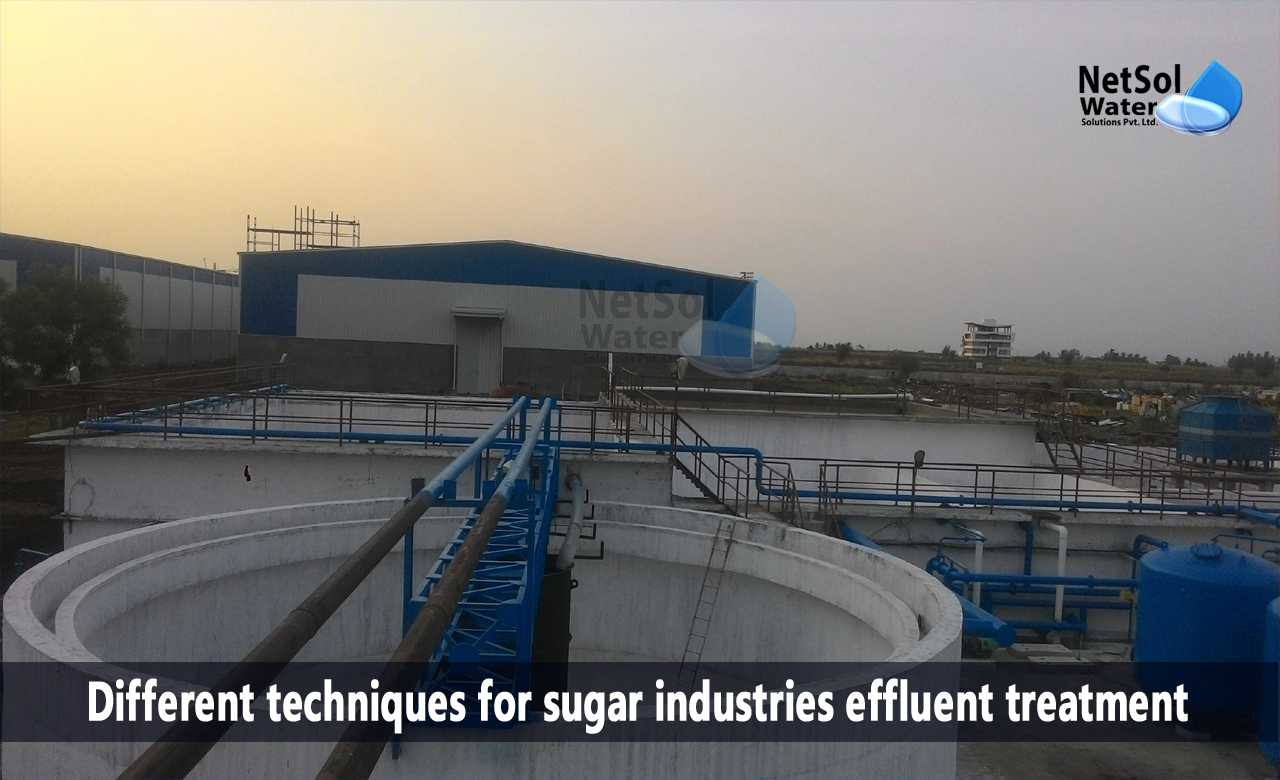Wastewater from sugar manufacturing industries
Three major categories can be used to categorize sugar industries:
(1) Companies that only make raw table sugar,
(2) Those who exclusively manufacture ethanol, and
(3) The integrated ones that generate both ethanol and raw sugar.
Different techniques for sugar industries effluent treatment
By optimizing water and material usage inside the production, pollution from the sugar industry can be decreased, just like pollution from other industries. The wastewater produced by the sugar industry can either be recycled, or released as effluent into water bodies after proper water treatment. Recycling water at the factory helps reduce waste.
Waste can be minimized by cleaning floors with controlled amounts of water and by using dry cleaning. Only effective operational management will be able to limit the pollution caused by organic wastes. When a lot of syrup boils and the evaporator and vacuum pan are full, sugar is lost from the condenser water, increasing the volume and potency of the wastewater.
Typical wastewater treatment techniques in sugar mills
A variety of sugar mill units' activated sludge processes (ASPs) are used in traditional wastewater treatment systems. There are many different types of devices, including bar screens, skimmers, levelling tanks, aeration units, purifiers, and sludge drying platforms.
Other treatments include:
1. Technology for anaerobic lagoons
2. Anaerobic Digestion
3. Up-flow anaerobic sludge bed reactor (UASB)
4. UBF (upward flow) sealing filter
5. Solid membrane fixed bed reactor
It has been discovered that anaerobic effluent treatment, employing both lagoons and digesters, is more efficient and economical. 89.6% of the BOD can be removed by an anaerobic lagoon with a retention period of 15 days, and a loading of 0.38 kg BOD/m3d.
Wherever enough area is available, a two-stage biological treatment for Indian conditions that uses anaerobic lagoons followed by aerobic waste stabilization ponds is advised. These days, the usage of fixed film processes is becoming more widespread.
What will happen if sugar industries effluent is not treated?
A significant portion of the wastewater discharged by the sugar industry, known as effluent, contains a high concentration of solids, BOD-5, COD, chloride, sulfate, nitrate, calcium, and magnesium. The availability of oxygen in water bodies can be rapidly depleted by wastewater from sugar mills, with high BOD-5 and COD, endangering aquatic life by threatening the survival of aquatic plants and fauna.
Additionally, because of inadequate wastewater treatment, septic conditions are formed, which lead to the precipitation of iron and dissolved salts that turns the water bodies black. Additionally, contaminated water bodies with this industrial wastewater are harmful to human and aquatic life. Therefore, using wastewater from the sugar industry directly to irrigate crops reduces seed germination, and seedling growth greatly without sufficient treatment and dilution.
What do we offer?
One of India's top producers of wastewater treatment systems for the sugar industry is Netsol Water. Contaminants are present in high concentrations of effluent from the production of sugar. In order to dispose of sugar mill effluent into water bodies safely and securely, or to reuse it in compliance with legal requirements, it must be treated.
Together with our customers, we develop a specialized water treatment solution that satisfies their individual needs, as well as an on-going service plan to fully maintain their system.



